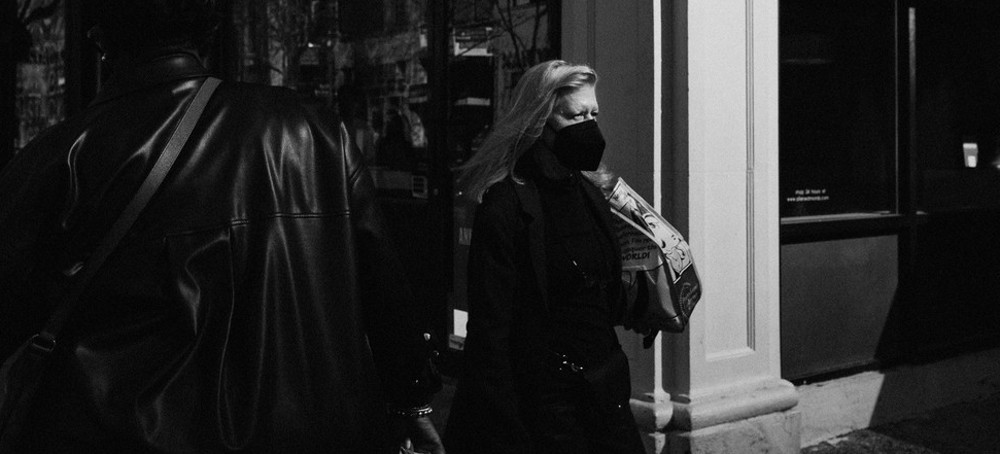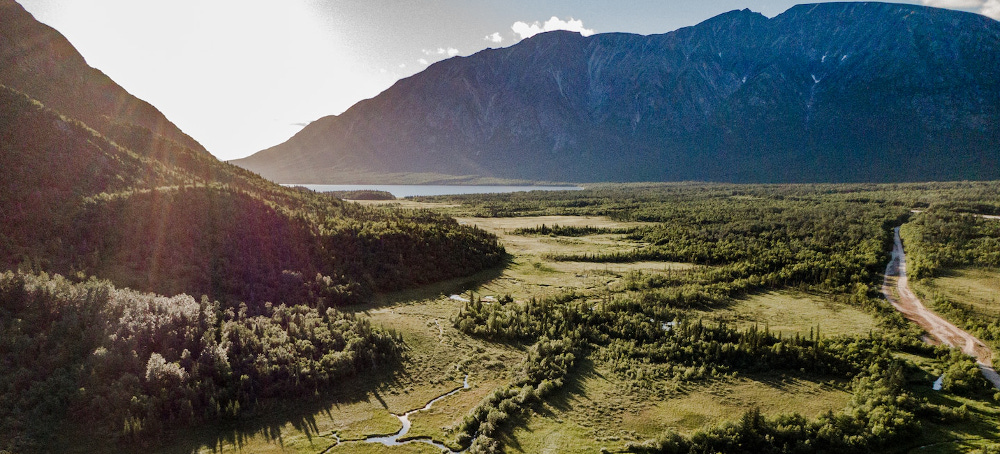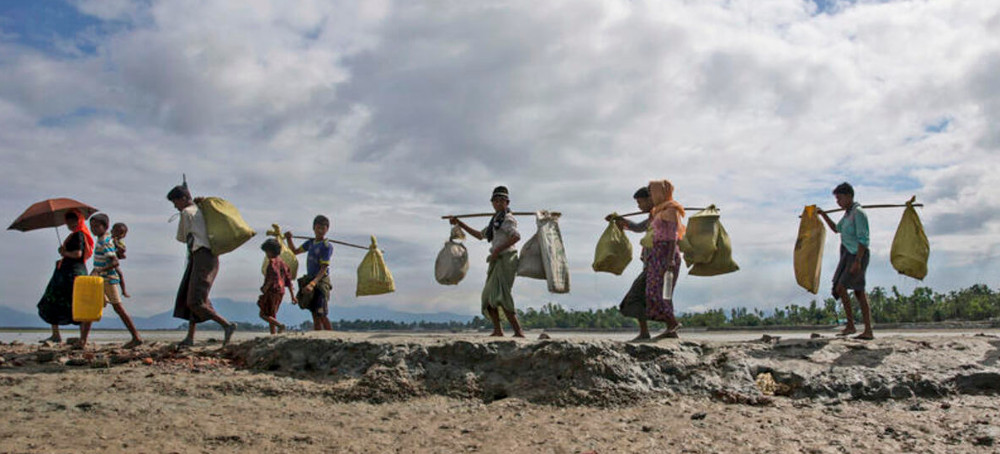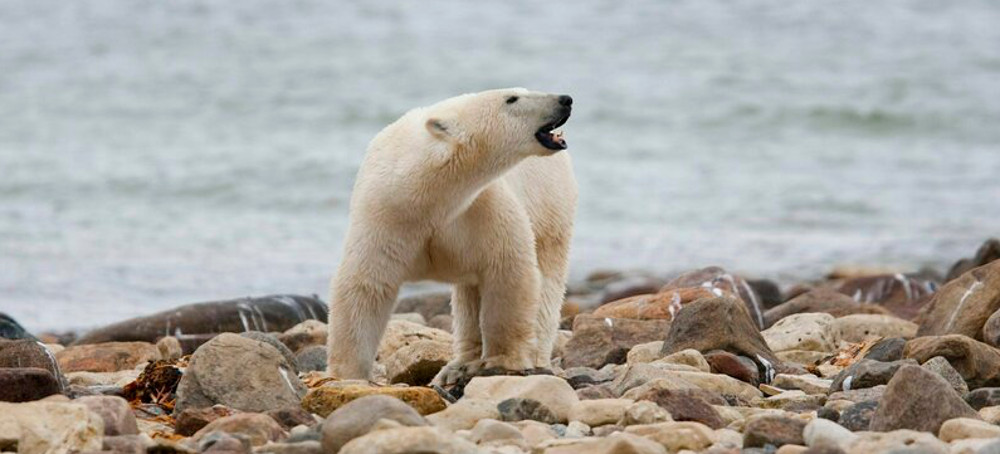Live on the homepage now!
Reader Supported News
Our Christmas present to you: a long-lost Eugene V. Debs article on the famed 1914 Christmas truce, in which German and British soldiers dropped their weapons for a day and played football together — displaying humanity in the face of barbarity.
And this has been pronounced a crime and threatened with punishment as the following cablegram explains:
The German army authorities have issued a general order prohibiting in the future troops in the field from fraternizing with forces of the enemy as they did at several points in the western theater of the war at Christmas. To such an extent was this fraternizing carried out, that at one place the Germans and British played football Christmas Eve and they agreed to suspend hostilities for two days more.
There you have it, plain and flat, as Hosea Bigelow would say. To allow these soldiers to play with each other instead of slaughtering one another would result in utter demoralization of the army.
There is a world of meaning in this incident. The soldiers must not be allowed to even suspect that there is anything in common between them except a common hostility and a common duty to murder one another for the glory of their alleged Fatherland.
May the time soon come when the soldiers of all nations will realize they are human beings instead of animals, and brothers instead of enemies.
READ MORE  New York Representative-elect George Santos speaks during the Republican Jewish Coalition Annual Leadership Meeting in Las Vegas, Nevada, on November 19. (photo: David Becker/Getty Images)
New York Representative-elect George Santos speaks during the Republican Jewish Coalition Annual Leadership Meeting in Las Vegas, Nevada, on November 19. (photo: David Becker/Getty Images)
ALSO SEE: George Santos Moved To Florida In 2016, Voted There,
Then Quickly Registered Again In New York
The Republican representative-elect who allegedly made up his life story, explained.
The Times found that he apparently did not graduate from Baruch College, he did not work for Goldman Sachs or Citigroup, there were no records of him being a successful financier, nor were there of him registering his animal rescue charity. The Times also found that he had been charged with check fraud in Brazil.
Further, a number of outlets have found no evidence of Santos’s repeated claims to be Jewish, to have Jewish heritage, or to be descended from refugees fleeing the Holocaust.
Santos has not directly denied any of the allegations. Instead, in a statement on Monday, which also included a quote wrongly attributed to Winston Churchill, his attorney said, “It is no surprise that Congressman-elect Santos has enemies at the New York Times who are attempting to smear his good name with these defamatory allegations.” On Thursday, Santos followed up on Twitter, promising “To the people of #NY03 I have my story to tell and it will be told next week.”
The story has sparked one of the more bizarre political scandals in American history. Members of Congress have committed murder in office. In fact, a member of Congress has even killed another member of Congress. Even in the present day, we’ve seen every scandal under the sun, from Anthony Weiner tweeting a lewd picture of himself, to Marjorie Taylor Greene’s infamous Facebook post about Jewish space lasers. But it’s hard to think of a precedent for a scandal like this.
Who is George Santos?
There are some things we know about Santos. The openly gay son of Brazilian immigrants, he was elected in November to an open congressional seat that includes a thin slice of Queens and much of the North Shore of Long Island in Nassau County. Santos defeated Democrat Robert Zimmerman by a margin of 54 percent to 46 percent. This represented a major swing from 2020 when Biden had won the district by the same margin. That year, Santos ran against incumbent Tom Suozzi in a similar district and lost handily by a margin of 56 percent to 43.5 percent.
The representative-elect is also a major Trump supporter — so much so that he was at Trump’s Ellipse rally on January 6, 2021, and has repeatedly falsely claimed that the former president won the 2020 election.
Also, for all his alleged lying about his résumé, it is clear that one company Santos worked at, Harbor City Capital, has been accused by the Securities and Exchange Commission of being a Ponzi scheme. As for Santos’s other employment, he did spend a stint as a Portuguese language customer service agent for DISH Network a decade ago.
What don’t we know?
We don’t know a lot. This ranges from basic facts about Santos’s biography to details about his dealings with the Brazilian criminal justice system, and everything in between, including where he actually lives.
But most importantly, we don’t know where Santos’s money comes from. The Representative-elect loaned his own campaign $700,000 during the 2022 cycle and claimed an income of $750,000. He also listed millions of dollars in assets including an apartment in Rio De Janeiro worth up to $1 million and a seven-figure savings account. It’s a major shift in fortune for someone who was evicted twice, in 2015 and 2017, for failing to pay rent and had been taken to court for not paying debts. Even in 2020, he reported income in only one category — compensation in excess of $5,000 paid by one source — with no other assets.
What happens now?
Dan Goldman, a fellow representative-elect from New York and a former prosecutor, has suggested that Santos face criminal investigation for conspiracy to defraud the United States as well as filing false statements to the Federal Election Commission.
In an interview with Vox, Goldman shied away from weighing in on whether Santos should be denied his seat in Congress. “I think the bigger question is not whether I think George Santos should be a member of Congress. The bigger question is whether Kevin McCarthy and the Republican leadership think that George Santos should be a member of Congress.”
However, as of now, McCarthy needs Santos almost as much as Santos needs McCarthy. The Republican leader is facing a revolt among hard-right Republicans opposed to him becoming speaker of the House in January. With the slim incoming GOP majority, it means McCarthy can only risk a handful of defections for a position that requires a majority vote of the entire House. Shortly before the Times’s story was published, Santos endorsed McCarthy on Twitter.
Further, because Santos represents one of the most Democratic seats in Congress held by a Republican, forcing him to resign under any circumstance is risky. It would be a difficult seat for a Republican to hold in a special election and a loss would further imperil an already slim GOP majority.
In the meantime, it’s a matter of waiting for the next shoe to drop. The office of New York Attorney General Letitia James is already “looking into some of the issues that have come out.” As unsustainable as the current status quo might seem, the only impetus right now for Santos to resign would be a sense of shame, and it seems unlikely that he carries that burden.
READ MORE  Another Covid wave seems to be on the horizon in the United States. (photo: Michelle Gustafson/Getty)
Another Covid wave seems to be on the horizon in the United States. (photo: Michelle Gustafson/Getty)
Once again, our pandemic numbers are creeping in the wrong direction.
Here we go again: For the first time in several months, another wave seems to be on the horizon in the United States. In the past two weeks, reported cases have increased by 53 percent, and hospitalizations have risen by 31 percent. Virus levels in wastewater, which can provide an advance warning of spread, are following a similar trajectory. After the past two years, a winter surge “was always expected,” Nash said. Respiratory illnesses thrive in colder weather, when people tend to spend more time indoors. Thanksgiving travel and gatherings were likewise predicted to drive cases, Anne Rimoin, an epidemiologist at UCLA, told me. If people were infected then, their illnesses will probably start showing up in the data around now. “We’re going to see a surge [that is] likely going to start really increasing in velocity,” she said.
Winter has ushered in some of the pandemic’s worst moments. Last year, Omicron’s unwanted arrival led to a level of mass infection across the country that we had not previously seen. The good news this year is that the current rise will almost certainly not be as bad as last year’s. But beyond that, experts told me, we don’t know much about what will happen next. We could be in for any type of surge—big or small, long or short, national or regional. The only certain thing is that cases and hospitalizations are rising, and that’s not good.
The pandemic numbers are ticking upward across the country, but so far the recent increases seem especially sharp in the South and West. The daily average of reported cases in Mississippi, Georgia, Texas, South Carolina, and Alabama has doubled in the past two weeks. Hospitalizations have been slower to rise, but over the same time frame, daily hospitalizations in California have jumped 57 percent and are now higher than anywhere else in the United States. Other areas of the country, such as New York City, have also seen troubling increases.
Whether the nationwide spike constitutes the long-predicted winter wave, and not just an intermittent rise in cases, depends on whom you ask. “I think it will continue,” Gregory Poland, a professor of medicine at the Mayo Clinic, told me. “We will pour more gas on the fire with Christmas travel.” Others hesitated to classify the uptick as such, because it has just begun. “It’s hard to know, but the case numbers are moving in the wrong direction,” Rimoin said. Case counts are unreliable as people have turned to at-home testing (or just not testing at all), though hospitalizations and wastewater readings remain reliable, albeit imperfect, metrics. “I’ve not seen a big enough change to call it a wave,” Susan Kline, an infectious-diseases expert at the University of Minnesota Medical School, told me.
But what to call the ongoing trend matters less than the fact that it exists. For now, what happens next is anyone’s guess. The dominant variants—the Omicron offshoots BQ.1 and BQ.1.1—are worrying, but they don’t pose the same challenges as what hit us last winter. Omicron drove that wave, taking us and our immune systems by surprise. The emergence of a completely new variant is possible this year—and would change everything—but that is considered unlikely.
The lack of data on people’s immune status makes it especially difficult to predict the outcome of the current rise. Widespread vaccination and infection mean we have a stronger wall of immunity now compared with the previous two winters, but that protection inevitably fades with time. The problem is, people fall sick asynchronously and get boosted on their own schedules, so the timing varies for everyone. “We don’t know anything about how long ago people were [vaccinated], and we don’t know anything about hybrid immunity, so it’s impossible to predict” just how bad things could get, Nash said.
Still, a confluence of factors has created the ideal conditions for a sustained surge with serious consequences for those who get sick. Fading immunity, frustratingly low booster uptake, and the near-total abandonment of COVID precautions create ideal conditions for the virus to spread. Meanwhile, treatments for those who do get very sick are dwindling. None of the FDA-approved monoclonal antibodies, which are especially useful for the immunocompromised, works against BQ.1 and BQ.1.1., which make up about 68 percent of cases nationwide. Paxlovid is still effective, but it’s underprescribed by providers and, by one medical director’s estimate, refused by 20 to 30 percent of patients.
The upside is that few people who get COVID now will get very sick—fewer than in previous winters. Even if cases continue to surge, most infections will not lead to severe illness because the bulk of the population has some level of immunity from vaccination, previous infection, or both. Still, long COVID can be “devastating,” Poland said, and it can develop after mild or even asymptomatic cases. But any sort of wave would in all likelihood lead to an uptick in deaths, too. So far, the death rate has remained stable, but 90 percent of people dying now are 65 and older, and only a third of them have the latest booster. Such low uptake “just drives home the fact that we have not really done a good job of targeting the right people around the country,” Nash said.
Even if the winter COVID wave is not ultimately a big one, it will likely be bad news for hospitals, which are already filling up with adults with flu and children with respiratory syncytial virus, or RSV. Many health-care facilities are swamped; the situation will only worsen if there is a big wave. If you need help for severe COVID—or any kind of medical issue—more than likely, “you’re not going to get the same level of care that you would have without these surges,” Poland said. Critically ill kids are routinely turned away from overflowing emergency rooms, my colleague Katherine J. Wu recently reported.
We can do little to predict how the ongoing surge might develop other than simply wait. Soon we should have a better sense of whether this is a blip in the pandemic or something more serious, and the trends of winters past can be helpful, Kline said. Last year, the Omicron-fueled surge did not begin in earnest until mid-December. “We haven’t even gotten to January yet, so I really think we’re not going to know [how bad this surge will be] for two months,” Kline said. Until then, “we just have to stay put and watch.”
It is maddening that, this far into the pandemic, “stay put and watch” seems to be the only option when cases start to rise. It is not, of course: Plenty of tools—masking, testing, boosters—are within our power to deploy to great effect. They could flatten the wave, if enough people use them. “We have the tools,” said Nash, whose rapid test came out negative, “but the collective will is not really there to do anything about it.”
READ MORE  Knutson Bay in Pedro Bay, Alaska. (photo: Bri Dwyer/Conservation Fund)
Knutson Bay in Pedro Bay, Alaska. (photo: Bri Dwyer/Conservation Fund)
The move will make it harder for the developers of the proposed Pebble Mine to build a road across the land, posing another setback for the controversial gold and copper mine that the Environmental Protection Agency is already considering blocking.
The details: Pedro Bay Corp., an Alaska Native group that owns land near Bristol Bay, announced last year that nearly 90 percent of its shareholders voted to let the Conservation Fund, an environmental nonprofit organization, buy conservation easements on more than 44,000 acres.
The corporation will reveal on Thursday that a successful $20 million, 18-month fundraising effort enabled the Conservation Fund to purchase three conservation easements on the land. The new protections cover a portion of the proposed mining road, which would be used to transport ore.
- The protections also cover the most productive spawning and rearing habitats for sockeye salmon within the Iliamna Lake watersheds.
- Half of the funding was provided by the Wyss Foundation, Patagonia’s Holdfast Collective and Alaska Venture Fund. (The specific dollar amounts of the individual contributions were not disclosed.)
“Protecting this last great stronghold for salmon is critically important for the health of the marine resources, the land, and the people who live in the Bristol Bay region,” Larry Selzer, president and chief executive of the Conservation Fund, told The Climate 202.
“It’s important to recognize that mining is a valuable economic activity and provides benefits to society that can’t be derived in any other way,” Selzer added. “However, not all projects should be approved. And the Pebble Mine is the wrong mine in the wrong place: up high in the watershed above the greatest salmon stronghold in the world.”
The fate of Bristol Bay has been contested for more than a decade. While many of Alaska’s elected officials have supported mining there, an unusual coalition of environmentalists, Republicans, fishermen and Alaska Natives helped persuade the Trump administration to deny a key permit for the Pebble Mine in 2020.
Pebble Limited Partnership, the U.S. subsidiary of the Canadian company behind the Pebble Mine, has argued that the project would provide economic benefits for the region and the state.
Asked for comment, Pebble Limited Partnership spokesman Mike Heatwole said in an email: “We respect the rights of Alaska Native corporation shareholders to make decisions about what to do on their lands and hope the Biden Administration will do the same for other Alaska Native corporation shareholders who may have differing views about what they would like do on their lands, especially regarding the Pebble Project.”
EPA’s potential veto
The Pebble Mine faces another potential challenge from the Biden administration. Casey Sixkiller, the EPA’s Region 10 administrator, announced Dec. 1 that he sent a recommendation to the agency’s headquarters to protect the Bristol Bay watershed by vetoing the project.
“This action would help protect salmon fishery areas that support world-class commercial and recreational fisheries, and that have sustained Alaska Native communities for thousands of years,” Sixkiller said in a statement.
Radhika Fox, who leads the EPA’s Office of Water, has 60 days to consider the recommendation. She could issue the veto, modify it, or reject it entirely.
“Hopefully these easements send a message that the local people who live here do not want this [mine] and it encourages the EPA to follow through with what they’ve been trying to do for well over a decade,” said Tim Troll, executive director of the Bristol Bay Heritage Land Trust.
Maria Michalos, an EPA spokeswoman, confirmed in an email that the agency expects to make a final decision by Jan. 30.
Patagonia’s role
The new protections were made possible, in part, by Patagonia founder Yvon Chouinard’s unconventional approach to capitalism.
- In September, Chouinard announced that he was giving away the outdoor apparel maker, valued at about $3 billion, and declared that “Earth is now our only shareholder.”
- Chouinard and his family transferred their ownership of Patagonia to a specially designed trust as well as the Holdfast Collective, a nonprofit organization dedicated to combating climate change and environmental destruction.
- As one of its first grants, the Holdfast Collective contributed to the fundraising effort that enabled the new protections near Bristol Bay.
Patagonia spokeswoman Corley Kenna noted that the company, which has a long history of environmental activism, has supported groups working to protect the region since 2006.
“Stopping any further development in Bristol Bay is exactly the kind of thing that we want to do because it gets at the roots of both the climate and ecological crises,” Kenna said.
On the Hill
Exclusive: Democrats call on consumer safety board to regulate gas stove pollution
Twenty congressional Democrats are calling on the Consumer Product Safety Commission to crack down on indoor air pollution emitted by gas stoves, according to a letter sent to CPSC Chair Alexander Hoehn-Saric on Wednesday that was shared exclusively with The Climate 202.
Led by Sen. Cory Booker (N.J.) and Rep. Don Beyer (Va.), the Democrats argued that pollution from gas stoves poses a growing threat to the climate and public health, especially in disadvantaged communities.
“As you know, the CPSC has broad authority under the Consumer Product Safety Act to regulate consumer products that pose an unreasonable risk of injury,” the lawmakers wrote. “We ask the CPSC to explicitly evaluate the disparate health outcomes that occur from the coupling of gas stoves with the material realities to which the most vulnerable Americans are subjected.”
The letter comes after Commissioner Richard Trumka Jr. announced last week that the board will solicit information from the public on the potential dangers of gas stoves and possible solutions.
Research has shown that gas stoves can emit significant amounts of nitrogen dioxide, a pollutant that can trigger asthma and other respiratory conditions, as well as methane, a potent greenhouse gas.
The Democrats urged the commission to consider taking the following actions:
- Issuing mandatory performance standards for gas stoves.
- Requiring gas stoves to be sold with efficient range hoods that help with ventilation.
- Mandating labels on gas stoves that educate consumers about their exposure risks.
Budget deal falls far short on Biden’s promise of climate aid
The government spending bill includes just a fraction of the funding that President Biden has promised to deliver to developing countries on the front lines of the climate crisis, The Washington Post’s Timothy Puko reports.
Biden has pledged to provide $11.4 billion annually to help poorer nations transition to clean energy and adapt to the ravages of climate change. But the government spending bill released this week, known as an omnibus, only authorizes about $1 billion for these efforts.
If approved, the measure could undermine the administration’s international reputation on climate change, especially as it aims to separate itself from previous administrations that had failed to deliver on promises to provide more money for the developing world.
Democrats were only able to secure $1 billion this year despite controlling both chambers of Congress. Administration officials emphasized that they are committed to securing more international climate aid a year from now, for the next fiscal year, even though Republicans will take control of the House in January.
Pressure points
A dangerous side of America’s digital divide: Who receives emergency alerts
Residents of neighborhoods with little to no cellphone service face heightened risks during weather disasters, when the lack of connectivity can prevent them from receiving emergency alerts, Brianna Sacks reports for The Post.
About 25 million homes and small businesses across the country have little to no cell service, according to the broadband consulting firm CostQuest, hindering their access to potentially lifesaving information and making it harder for them to contact authorities.
The consequences of the nation’s digital divide have become clearer as climate-change-fueled disasters have become more common. In August, for example, some Northern California residents said they were never warned that they were in the direct path of a massive wildfire, despite having signed up for the notifications.
The federal government has launched several initiatives to improve access to reliable cell service, especially for Americans in rural areas and low-income communities.
READ MORE  A common morning-after pill, approved in 1999 and now sold as Plan B One-Step, does not block a fertilized egg’s ability to implant in the uterus — a claim that abortion opponents have used to erroneously call it an abortion pill. (photo: Jim Watson/AFP)
A common morning-after pill, approved in 1999 and now sold as Plan B One-Step, does not block a fertilized egg’s ability to implant in the uterus — a claim that abortion opponents have used to erroneously call it an abortion pill. (photo: Jim Watson/AFP)
Labels of Plan B One-Step had previously said, without scientific evidence, that the pill might block fertilized eggs from implanting in the womb.
Up to now, packages of the brand-name pill, Plan B One-Step, as well as generic versions of it have said that the pill might work by preventing a fertilized egg from implanting in the womb — language that scientific evidence did not support. That wording led some abortion opponents and politicians who equate a fertilized egg with a person to say that taking the morning-after pill could be the equivalent of having an abortion or even committing murder.
The F.D.A. revised the leaflets inserted in packages of pills to say that the medication “works before release of an egg from the ovary,” meaning that it acts before fertilization, not after. The package insert also says the pill “will not work if you’re already pregnant, and will not affect an existing pregnancy.”
 Rohingya people raise their hands and shout that they won’t go back to Myanmar during a demonstration in 2018 near Cox’s Bazar, Bangladesh. (photo: Manish Swarup/AP)
Rohingya people raise their hands and shout that they won’t go back to Myanmar during a demonstration in 2018 near Cox’s Bazar, Bangladesh. (photo: Manish Swarup/AP)
A single mother who hadn’t been able to work thought she’d finally find employment in a new country. A 17-year-old who dreamed of receiving higher education. A young woman on her way to meet her new husband.
But days after leaving their refugee camp in Bangladesh, the engine on their boat failed. And for more than 2½ weeks, all three of them, along with more than 150 other Rohingya Muslim refugees, have found themselves adrift in the Andaman Sea in the northeast Indian Ocean. Food and water ran out more than 10 days ago, according to relatives of those on board. And as many as 20 people have already died, including children, per the United Nations.
Despite increasingly desperate appeals for help, neighboring countries have not dispatched help — or given any indication that they intend to, activists say.
“Please,” said Mohammad Rezuwan Khan, whose sister and niece are on board the boat. “I ask the international community to not let them die.”
“Rohingya are human beings,” he added. “Our lives matter.”
In 2017, following targeted attacks by the Myanmar military that the United States now considers acts of genocide, hundreds of thousands of Rohingya fled Myanmar and settled in Cox’s Bazar, a city on the southeast coast of Bangladesh, forming what has become the biggest refugee camp in the world.
For years, groups of refugees have tried to leave the camp, where they’re largely not allowed to seek gainful employment or higher education, and where their mobility is tightly controlled. Because most of them are stateless and options for formal resettlement are rare, many turn to smugglers to take them across the Andaman Sea to countries in Southeast Asia.
The number of these departures, often taken on unsafe vessels, has spiked dramatically in recent months, according to the Office of the U.N. High Commissioner for Refugees (UNHCR). Nearly 2,000 people have tried this year to cross the Andaman Sea from Bangladesh or Myanmar — about six times as many as in 2020.
The stranded boat departed Cox’s Bazar in late November and was bound for Indonesia — more than 1,000 miles away — where passengers hoped to stay or to head on to Malaysia, where there’s a large Rohingya population. But on Dec. 4, the captain of the boat sent out distress signals via a satellite phone — the engine had failed, the captain said, and supplies of food were dwindling.
Aminullah, a Rohingya man in Cox’s Bazar who goes by only one name, said his 16-year-old sister is on board the boat. “At this point,” he said, “we don’t even know if they are alive.”
Aid groups and the UNHCR have called on countries in the region, which include India, Indonesia, Thailand and Malaysia, to send out rescue missions and allow the boat to disembark. But as of Friday, no assistance had been dispatched.
In a statement Thursday urging regional governments to act, U.N. special rapporteur on Myanmar Tom Andrews noted that “the duty to rescue persons in distress at sea is a fundamental rule of international law, is a norm of customary international law and is incorporated in international treaties.”
The boat was originally reported near the Nicobar Islands, potentially in Indian waters, activists said. Priyali Sur, founder of the Azadi Project, a New Delhi-based organization that supports refugees, said she made appeals over recent weeks to India’s Maritime Rescue Coordination Center, urging it to send out rescuers. As of Thursday, she said, she had not received any confirmation that it plans to do so.
“The fact is that none of these countries wants to take them,” said Sur. “We’ve seen this again and again with refugee communities.”
India’s Ministry of Defense, which oversees the Maritime Rescue Coordination Center, and its Ministry of External Affairs did not respond to inquiries Thursday. Officials in Thailand and Malaysia also did not respond to inquires this week about whether they planned to assist the boat.
Eros Shidqy Putra, a member of Indonesia’s refugee task force, said officials are still verifying the whereabouts of the stranded boat and whether it has entered Indonesian waters. The country is “very concerned about the fate of the Rohingya refugees,” he said, but discussions are still ongoing on how to respond to the situation because “decisions must be made in the right way.”
Khan, speaking over the phone from Cox’s Bazar, said there isn’t time to wait. Casualties have been mounting by the day. Governments need to dispatch rescuers immediately, he said, but they can’t stop there.
His sister, a 27-year-old single mother, had been struggling in the refugee camp for years, Khan said. She was frequently stricken with illness and couldn’t find steady work to provide for her two children. She had hoped to find a better life in Malaysia and a better future for her youngest daughter, who is 5.
“If we have nationality, if we have passports, we wouldn’t die at sea,” Khan said, choking back tears.
“We’ve already suffered a lot,” he continued. “Enough is enough.”
READ MORE  A polar bear walks along the shore of Hudson Bay near Churchill, Manitoba, on Aug. 23, 2010. (photo: Sean Kilpatrick/AP)
A polar bear walks along the shore of Hudson Bay near Churchill, Manitoba, on Aug. 23, 2010. (photo: Sean Kilpatrick/AP)
Researchers surveyed Western Hudson Bay — home to Churchill, the town called "the Polar Bear Capital of the World," — by air in 2021 and estimated there were 618 bears, compared to the 842 in 2016, when they were last surveyed.
"The actual decline is a lot larger than I would have expected," said Andrew Derocher, a biology professor at the University of Alberta who has studied Hudson Bay polar bears for nearly four decades. Derocher was not involved in the study.
Since the 1980s, the number of bears in the region has fallen by nearly 50%, the authors found. The ice essential to their survival is disappearing.
Polar bears rely on arctic sea ice — frozen ocean water — that shrinks in the summer with warmer temperatures and forms again in the long winter. They use it to hunt, perching near holes in the thick ice to spot seals, their favorite food, coming up for air. But as the Arctic has warmed twice as fast as the rest of the world because of climate change, sea ice is cracking earlier in the year and taking longer to freeze in the fall.
That has left many polar bears that live across the Arctic with less ice on which to live, hunt and reproduce.
Polar bears are not only critical predators in the Arctic. For years, before climate change began affecting people around the globe, they were also the best-known face of climate change.
Researchers said the concentration of deaths in young bears and females in Western Hudson Bay is alarming.
"Those are the types of bears we've always predicted would be affected by changes in the environment," said Stephen Atkinson, the lead author who has studied polar bears for more than 30 years.
Young bears need energy to grow and cannot survive long periods without enough food and female bears struggle because they expend so much energy nursing and rearing offspring.
"It certainly raises issues about the ongoing viability," Derocher said. "That is the reproductive engine of the population."
The capacity for polar bears in the Western Hudson Bay to reproduce will diminish, Atkinson said, "because you simply have fewer young bears that survive and become adults."
Follow us on facebook and twitter!
PO Box 2043 / Citrus Heights, CA 95611



No comments:
Post a Comment
Note: Only a member of this blog may post a comment.